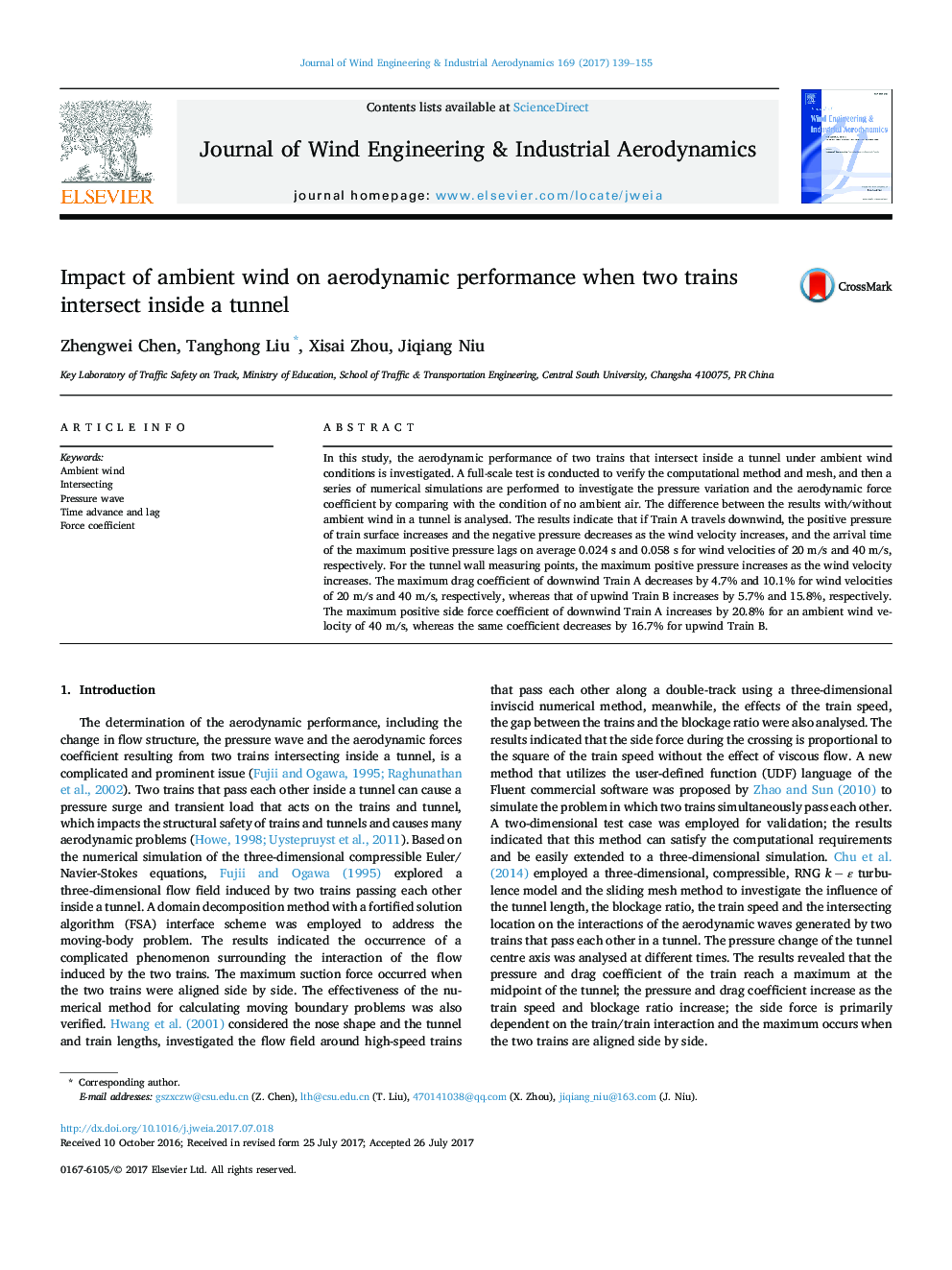| Article ID | Journal | Published Year | Pages | File Type |
|---|---|---|---|---|
| 4924847 | Journal of Wind Engineering and Industrial Aerodynamics | 2017 | 17 Pages |
Abstract
In this study, the aerodynamic performance of two trains that intersect inside a tunnel under ambient wind conditions is investigated. A full-scale test is conducted to verify the computational method and mesh, and then a series of numerical simulations are performed to investigate the pressure variation and the aerodynamic force coefficient by comparing with the condition of no ambient air. The difference between the results with/without ambient wind in a tunnel is analysed. The results indicate that if Train A travels downwind, the positive pressure of train surface increases and the negative pressure decreases as the wind velocity increases, and the arrival time of the maximum positive pressure lags on average 0.024Â s and 0.058Â s for wind velocities of 20Â m/s and 40Â m/s, respectively. For the tunnel wall measuring points, the maximum positive pressure increases as the wind velocity increases. The maximum drag coefficient of downwind Train A decreases by 4.7% and 10.1% for wind velocities of 20Â m/s and 40Â m/s, respectively, whereas that of upwind Train B increases by 5.7% and 15.8%, respectively. The maximum positive side force coefficient of downwind Train A increases by 20.8% for an ambient wind velocity of 40Â m/s, whereas the same coefficient decreases by 16.7% for upwind Train B.
Related Topics
Physical Sciences and Engineering
Energy
Renewable Energy, Sustainability and the Environment
Authors
Zhengwei Chen, Tanghong Liu, Xisai Zhou, Jiqiang Niu,
